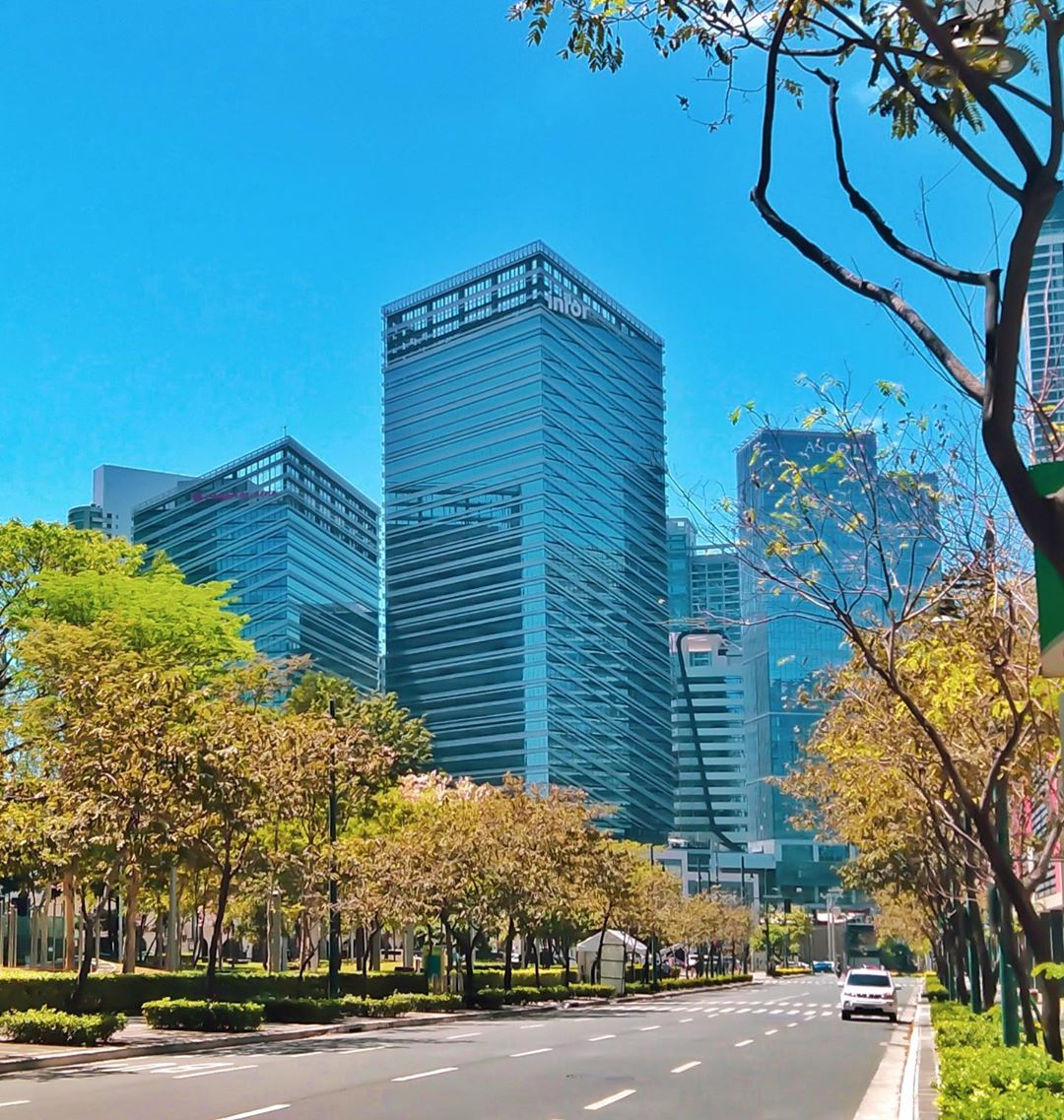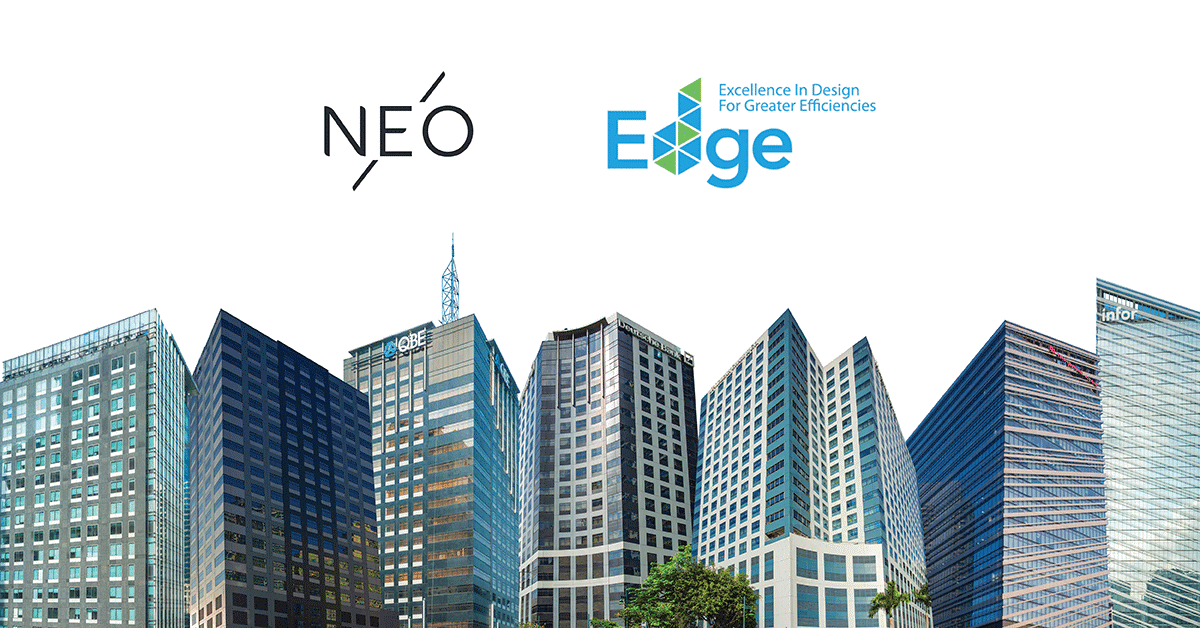Stories
Asset Owners Take Note: First EDGE Zero Carbon Whole Building Portfolio is Certified in the Philippines
NEO’s real estate portfolio is the first in the world to achieve EDGE Zero Carbon certification using the new retrofit protocol, establishing a clear path to decarbonization for all existing building portfolios.
The truth is harsh. To meet the demands of the Paris Agreement and combat the climate emergency facing the globe, every building in the world needs to be Zero Carbon by 2050—less than 30 years from now. Currently, zero carbon buildings number in the hundreds worldwide, despite rapid growth in new green building certification in general.
Existing buildings contribute more than 40% of the world’s current greenhouse gas emissions from energy use. That makes them a target for public policy reform. In response, long term investors like pension funds and financial institutions are analyzing the energy efficiency of their portfolios. Focus is fast switching from new stock, which has always been the easiest to green, to the challenge of greening existing building stock.
EDGE’s new Zero Carbon Retrofit Protocol allows asset owners to map a quantified path to zero carbon and attain immediate recognition through certification. Leading the way, one company in the Philippines has recently become the first in the world to certify their entire portfolio of buildings under the EDGE Zero Carbon Retrofit Protocol.
Meet the New Standard: “The NEO Way”
NEO is leading the way in the Philippine property sector with its commitment to net zero. NEO pledged to reach EDGE Zero Carbon Certification for its entire building portfolio by 2022 and has already met their goal. The company has a portfolio of seven office towers in Metro Manila, Philippines, covering 289,000 square meters. EDGE certifier Sintali-SGS has awarded preliminary Zero Carbon certification to NEO based on an agreed set of upgrades and a track record of renewable energy and carbon credit purchases.

NEO’s Office Tower 7, located in Manila, Philippines.
To meet the standard to be certified as Zero Carbon with EDGE, a building needs to achieve a minimum of 20% savings in water and embodied energy in materials plus 40% energy savings on-site and 100% emission reduction met through renewables or carbon offsets. For green retrofit projects to be certified under the new protocol, companies must verify that their retrofit design meets the minimum 40% operational energy efficiency improvements, as well as prove that the operational energy from the previous year is from renewable sources. Any remaining emissions should be compensated by carbon offsets. Once the energy efficiency retrofit is completed within a three-year period, the project will undergo final certification for EDGE Advanced and EDGE Zero Carbon status.
NEO’s buildings meet this target, featuring 41-49% with energy sources procured from the ‘Cleanergy’ portfolio of Aboitiz Power Corporation. Decarbonization is not only good for the climate and necessary for aligning with the Paris Agreement—it is also good for business. NEO’s green retrofit initiative will result in lower consumption costs, making the buildings more attractive for potential tenants. Sustainability has become a primary concern for global corporations, and companies working in NEO office towers can add Net Zero Carbon bonafides to their climate-friendly credentials.
NEO’s Pathway to Zero Carbon
What steps did NEO take to achieve the Zero Carbon milestone? In 2019, NEO set a target decarbonization date of 2050 as a signatory of the Net Zero Carbon Buildings Commitment by the World Green Building Council. Three buildings were certified as Net Zero by early 2021 as the pilot projects of the Philippine Green Building Council’s Advancing Net Zero Philippines program. The remaining buildings of the NEO portfolio are also slated for certification under the program.

NEO’s portfolio of seven office towers in Metro Manila, Philippines.
Asset owners take note: NEO has proven that Net Zero Carbon is achievable for your whole portfolio:
“Net-zero is far from simple, but it’s realistic and possible. Across any industry, it is important to look at the overall impact of emissions before taking any steps forward. Net-zero pledges are achievable by accompanying it with deep management commitment and strategic policy structures,” states Gie Garcia, Managing Director, Neo Property Management Incorporated.
NEO recognizes the urgent need for leadership in prioritizing decarbonization initiatives, particularly in the Philippines. The country is one of the most vulnerable to natural disasters, a threat that will only worsen with the effects of global climate change. By pursuing zero carbon certification, NEO establishes their sustainability commitment and proves to the building industry that building green is not only feasible but serves to ignite expansion of sustainable developments.
“We desperately need our businesses to become Net Zero in order to avert a climate catastrophe. By publicly committing to Net Zero then being the first portfolio in the world to achieve EDGE Zero Carbon Certification, NEO hopes to inspire many other businesses on their Net Zero journey. Regardless of your size, industry, or country – what matters most is that we start as soon as possible,” said Raymond Rufino, President and CEO of NEO Property Management Incorporated.
The Retrofit Solution
2050 may be decades away, but nearly 75% of existing buildings will still be in use by that date. This means that green retrofits will play a vital role in achieving global climate goals and must be incorporated into Zero Carbon planning for every country and company worldwide.
According to a white paper from EDGE certifier Sintali, Decarbonising Existing Buildings: A Guide to Green Retrofit with EDGE, “by using EDGE as a strategic tool, building owners and operators can bring their entire existing building stock to net zero carbon in a quantifiable, transparent, and streamlined manner and realize multiple benefits, including access to finance.”
Retrofits also represent a sizeable investment opportunity in emerging markets. According to Vivek Pathak, Director and Global Head of Climate Business at IFC, “NEO’s achievement sets a precedent. Developers with existing buildings should raise their climate ambitions toward improving returns for their investors and increasing the value of their assets while generating positive outcomes for the environment.”
Investors will be pleased, and the environment will reap the benefits. By using retrofits rather than beginning new construction, asset owners will lessen the overall impact on climate change, as new construction utilizes far more energy and generates more emissions than updating green features into the existing built environment.
Interested in following NEO’s example and beginning a retrofit project under the EDGE Zero Carbon Retrofit Protocol? Contact edge@ifc.org.


